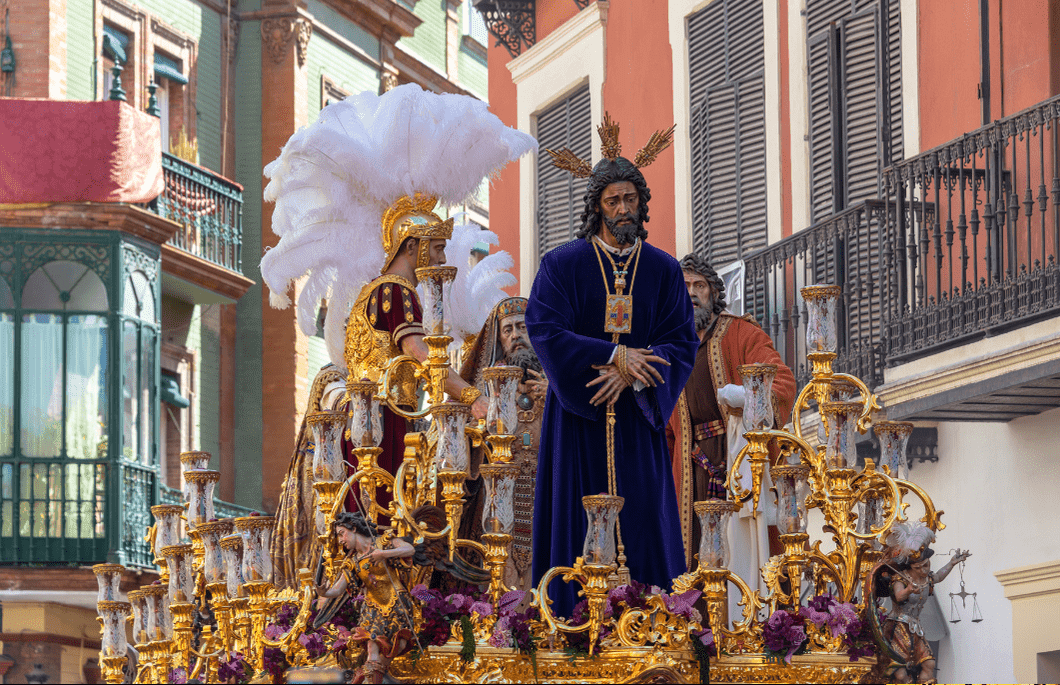
Semana Santa Spectacle: Gastronomy and Rituals in the Heart of Latin America
Semana Santa, or Holy Week, is a time when Latin America transforms into a vibrant canvas, each country painting its own unique strokes of tradition and culture. From Mexico’s flamboyant celebrations to Colombia’s deep spiritual observances, this week is a fascinating journey through a rich cultural landscape.
Along with the religious traditions, there is also a delectable journey through the kitchens of Latin America. Each country not only showcases unique customs but also serves up traditional foods that are as rich in flavor as they are in history. Let’s take a gastronomic tour from Mexico to Colombia, savoring the traditional dishes that make this week even more special.
Mexico: A Fiesta of Faith and Color
In Mexico, Semana Santa is a fusion of indigenous traditions and Spanish Catholic influences, creating a kaleidoscope of color and passion. The streets come alive with elaborate processions and dramatic reenactments of Jesus’ Passion. One of the most spectacular sights is in Iztapalapa, where the largest reenactment in the country takes place. Here, the story of Christ’s suffering is not just told; it is felt, as actors and locals alike participate in a moving display of faith and tradition.
Apart from the religious fervor, the week is also a time for relaxation and family gatherings. Many Mexicans take this opportunity to enjoy the spring weather, heading to beaches or enjoying local festivities.
In Mexico, the table is set with a variety of meat-free dishes, respecting the Lenten tradition of abstaining from meat on certain days. One of the stars is “Capirotada,” a bread pudding made with cheese, fruits, nuts, and cinnamon – a unique blend of flavors that tantalize the taste buds. Also popular are “Empanadas de Vigilia,” turnovers filled with shrimp, fish, or cheese, embodying the rich coastal culinary heritage of the country.
Guatemala: Artistic Alchemy on the Streets
Moving south to Guatemala, the Semana Santa experience is transformed into a breathtaking display of artistic devotion. The highlight here is the creation of “alfombras” – vibrant carpets made of colored sawdust, flowers, and even fruits, which adorn the paths of religious processions. The air in cities like Antigua is thick with incense, and the sound of solemn marches fills the streets, creating an atmosphere of deep reverence.
Guatemala’s Semana Santa cuisine is a symphony of flavors. “Pescado Seco,” a traditional dried fish dish, takes center stage, often accompanied by a tantalizing blend of vegetables and spices. Sweet tooth? Don’t miss the “Torrejas,” a Guatemalan version of French toast soaked in a sweet syrup, a treat that perfectly complements the more savory offerings.
El Salvador: A Blend of Sorrow and Hope
In El Salvador, Semana Santa is marked by a profound sense of both mourning and hope. Processions here are often somber, with participants dressed in penitential robes, carrying statues of Jesus and the Virgin Mary through the streets. The palpable sorrow for the suffering of Christ is intertwined with a strong sense of communal solidarity and hope for redemption.
In El Salvador, comfort food takes a front seat during Semana Santa. “Pupusas,” thick corn tortillas stuffed with a variety of fillings like cheese or beans, are a must-try. For those looking for something sweet, “Empanadas de Leche” – plantains stuffed with sweetened milk – provide a delightful end to the meal.
Honduras: Tradition and Tourism Hand in Hand
Honduras offers a unique blend of traditional religious observances and tourist-friendly events. Towns like Comayagua are known for their religious processions, which are as much a draw for devout locals as for curious visitors. The mix of solemnity and celebration creates a unique atmosphere where faith and cultural tourism walk hand in hand.
Honduras, with its rich coastline, celebrates Semana Santa with an array of seafood dishes. “Sopa de Caracol,” a hearty conch soup flavored with coconut milk, spices, and yucca, is a real treat for seafood lovers. Also popular are fish and shrimp dishes, often grilled or cooked in a tantalizing coconut sauce.
Costa Rica: Reflective and Restful
In Costa Rica, Semana Santa is a time for reflection and rest. It’s one of the quietest times of the year, with many businesses closing and locals taking time off to be with family. The religious aspect is still present, with processions and church services, but there’s also a strong emphasis on taking a break from the hustle of everyday life, making it a time for rejuvenation of both spirit and body.
In Costa Rica, the food during Semana Santa reflects the country’s serene atmosphere. “Chiverre” jam, made from a local squash, is a traditional sweet treat, often spread on bread or used in pastries. Seafood, especially shrimp and fish, is also commonly enjoyed, sometimes prepared in a simple yet flavorful “ceviche.”
Colombia: A Mosaic of Devotion
In Colombia, Semana Santa is observed with a profound sense of devotion. Cities like Popayán and Mompox are famous for their processions, which are among the most beautiful and solemn in Latin America. Here, the week is steeped in ritual and tradition, with a focus on the spiritual aspect of the holiday.
Colombia offers a diverse culinary palette for Semana Santa. Inland, “Tamal Tolimense,” a type of tamale filled with rice, meat, and vegetables, is a popular choice. On the coast, “Arroz de Lisa” (mullet fish rice) showcases the rich coastal bounty. And for dessert? “Dulce de Brevas,” figs in syrup, provides a sweet finish to the meals
Uniting Diverse Cultures
Across these countries, Semana Santa is more than just a religious observance; it’s a cultural phenomenon that ties together diverse peoples through shared rituals and unique local customs. Each country, from Mexico to Colombia, offers its own flavor to the festivities, making Semana Santa a rich and varied tapestry of Latin American culture and faith.
As we observe these distinct but interconnected celebrations enhanced with a culinary tour, we are reminded of the diverse ways in which faith, culture, and tradition can be expressed and celebrated. Semana Santa, with its vivid colors, solemn processions, and joyous gatherings, truly encapsulates the spirit of Latin America.
Remember to share your Semana Santa stories and experiences and favorite Semana Santa dishes and memories with us using #howlermag and #howlermagazine! Let’s celebrate the flavors that bring us together during this special time of year.




